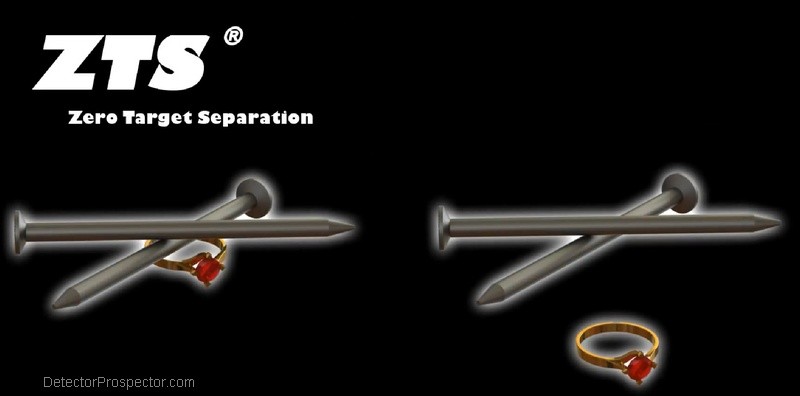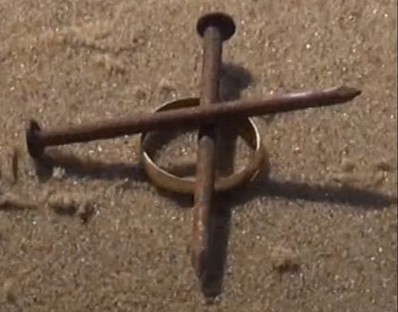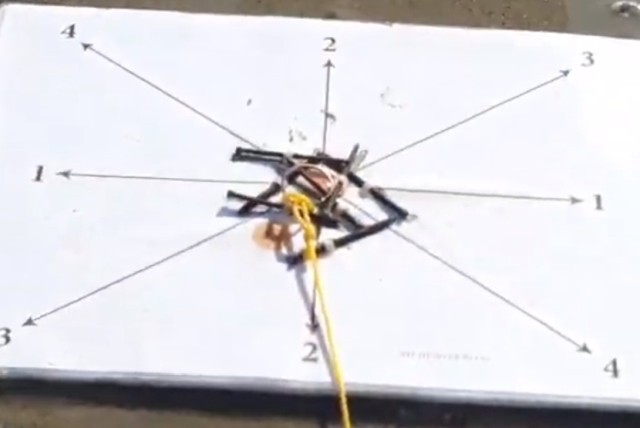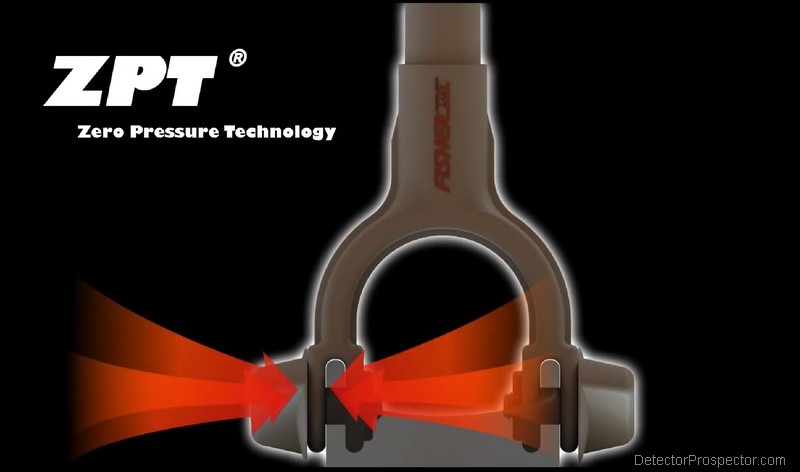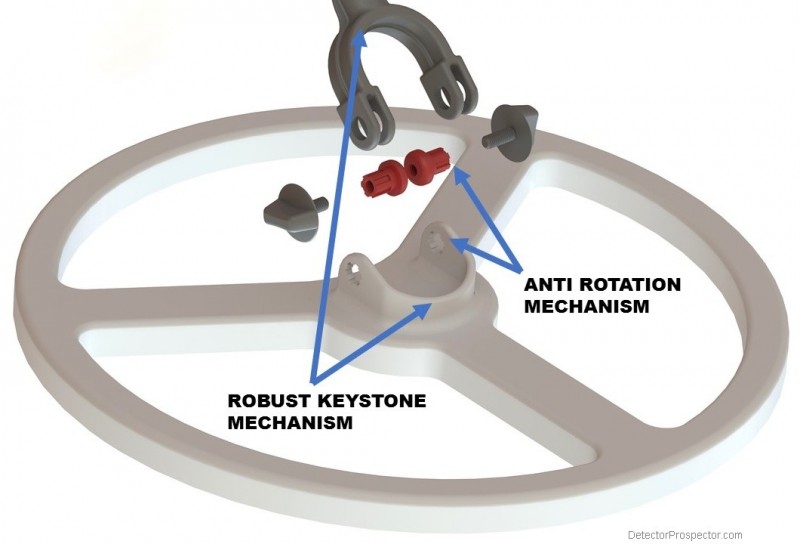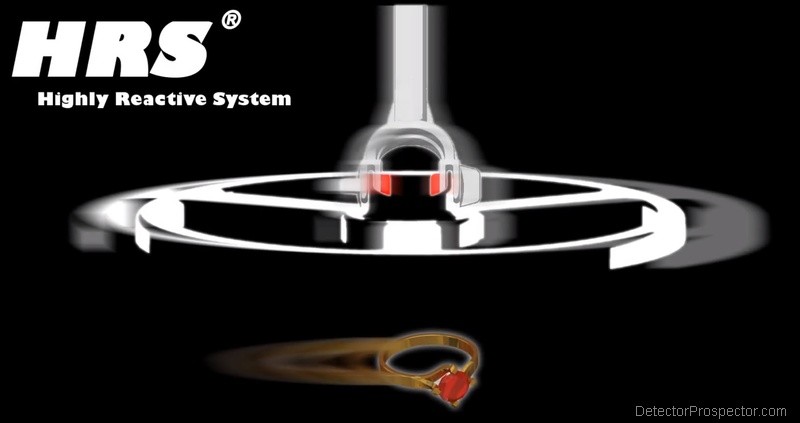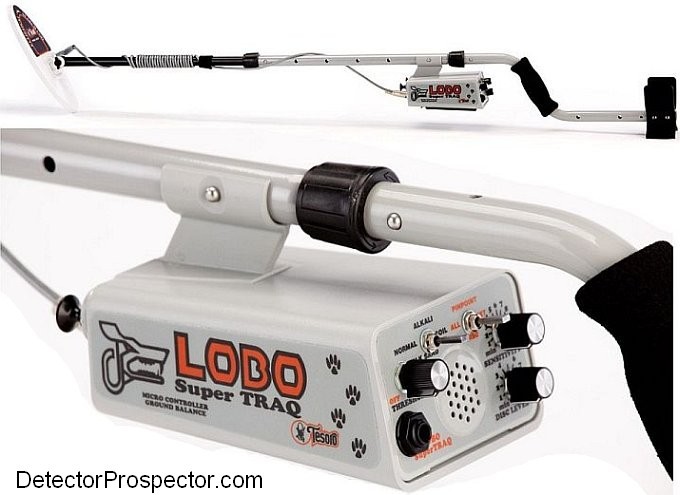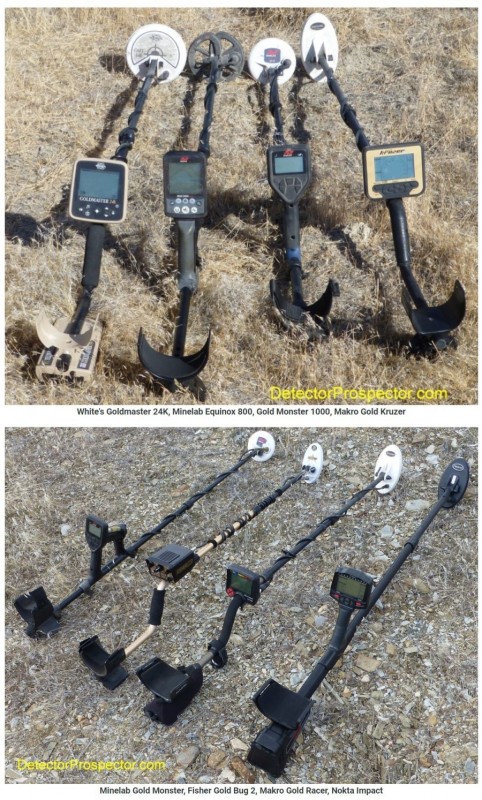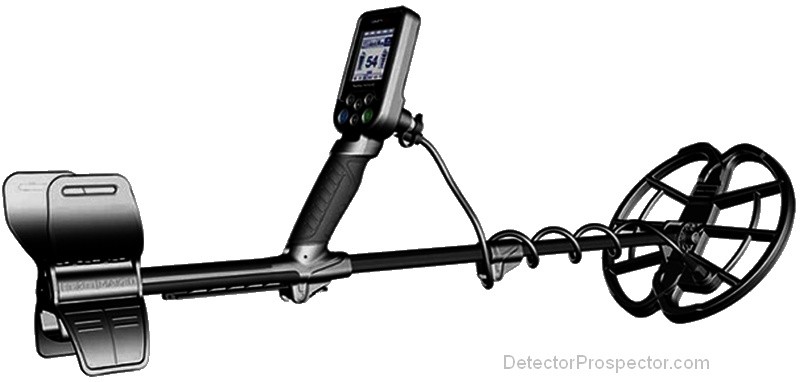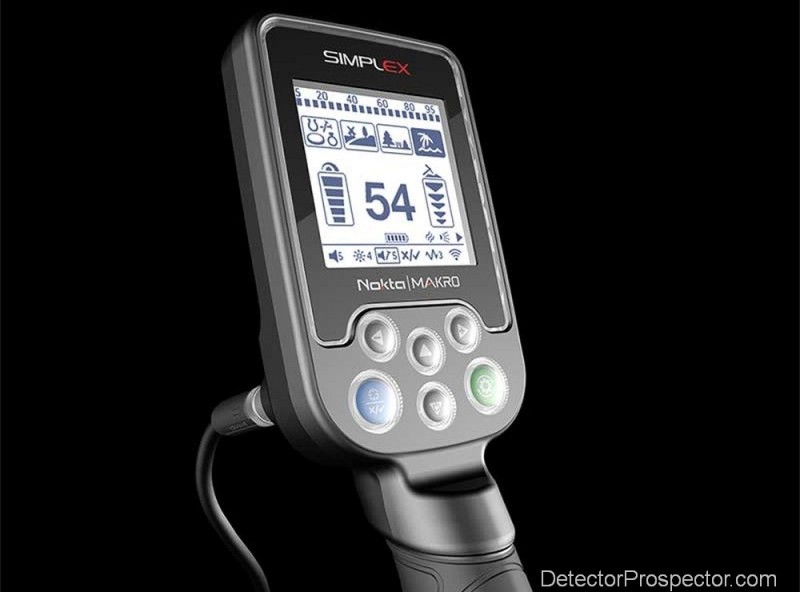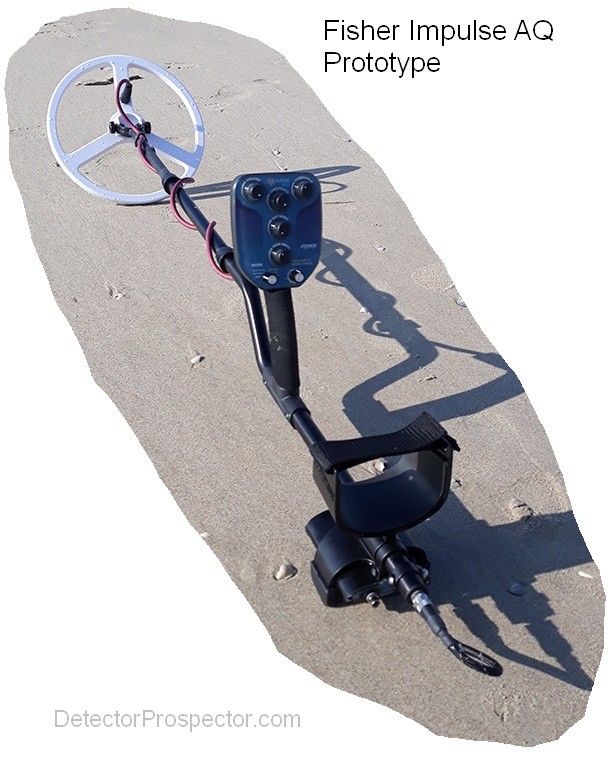-
Posts
19,761 -
Joined
Content Type
Forums
Detector Prospector Home
Detector Database
Downloads
Everything posted by Steve Herschbach
-

Last Days For Tesoro?
Steve Herschbach replied to Steve Herschbach's topic in Compass, D-Tex, Tesoro, Etc.
Tesoro website is back up but the navigation structure seems to be missing. Here is a direct link to the detector index. -

Alaska Tesoro Lobo St
Steve Herschbach replied to Mike nelsen's topic in Metal Detector Advice & Comparisons
Welcome to the forum! No, the Kenai Peninsula is pretty mild ground. All metal mode for nugget detecting, disc mode for coin detecting. If you don't have a manual you can download one here. -

Help Select Detector For Search Thin Gold
Steve Herschbach replied to stolik333's topic in Metal Detecting For Jewelry
If you do mean detecting in saltwater a Minelab Equinox is about as good as you will get for small gold jewelry. There is a limit to what can be done in saltwater since small gold and saltwater signals are the same at a certain point. The only serious alternative on the horizon that might do better is the new Fisher Impulse AQ. In freshwater the new Nokta/Makro Gold Kruzer is a machine I like, waterproof and very hot on small gold. Too hot for saltwater though. -
Everyone is gaga over Deus high frequency. Gold Kruzer runs at 61 kHz, and unlike Deus has smaller DD coils and a concentric coil option. Coils are half the battle and Gold Kruzer has the edge there, not to mention you can buy several Gold Kruzer coils for the price of one Deus coil. I’m not a big relic hunter but I am surprised nobody has picked up on this yet. Micro jewelry and micro nuggets are similar, with variations in natural gold running both smaller and less pure that eventually make many nuggets undetectable. Frequency is only one of many components, with circuit gain being a larger factor in many instances. Case in point the new digital 19 kHz Gold Bug does much better on small gold than the original analog 19 kHz Gold Bug. Gain can be pushed so high that many prospectors dumped the 71 kHz Gold Bug 2 for the highly boosted 45 kHz Gold Monster, which will air test better. Gain pushed so high leads to coil instability however that can prove problematic in field conditions so the equation becomes less clear in actual use. Coils matter a lot, concentric vs DD. A huge difference exists when talking all metal vs discrimination. Machines that are better in all metal can drop behind other machines when the discrimination is engaged. It’s two different detectors really when talking disc versus all metal because there are different ways to approach discrimination at the micro level. The efficiency of the ground balance circuit matters as sensitivity varies with the ground balance setting and so people in different ground see different results simply because they have different ground balance settings. Some detectors have discrimination ranges that run into the ground range, and opening that range can have dramatic effects, but with attendant issues in dealing with the ground and hot rocks Then the dirty little secret nobody likes to mention or hear. At the micro gold level differences between individual detectors exhibit. No ten Gold Bug 2 detectors will test the same. There are good ones and bad ones. The GB2 is factory tuned for the coil it ships with. Merely changing coils can turn a good GB2 into a bad GB2. The coil design itself has changed over the years as has the Gold Bug 2 itself. Forum members here are probably aware of CZ differences. Well, the CZ has got nothing on the Gold Bug 2 differences that exist at the micro level, and it is far from the only detector for which that is true. Once you sort all that out, the ground rules. Hot rocks nobody ever knew existed magically appear when running this class of detector to the hilt, and for micro jewelry the issue of micro aluminum raises its ugly head. In the real world practical limitations appear that air tests ignore. When you add all this up anyone thinking there is one magic detector that solves this equation best for all people.... good luck.
-

GPZ 7000 Vs. GPX 5000
Steve Herschbach replied to Erik_in_Mission's topic in Minelab Metal Detectors
I have gold specimens a GPX can’t detect, period. That the GPZ detects at several inches. What percent more is several inches over 0 inches? -
I personally am not a fan of undercurrents. I am not saying they don’t work, but I never wanted the extra complexity and weight. And extra cons to cleanup. For me a well designed basic sluice box is preferable. That I because most of my operations were two weeks or less, and packing into canyons was my thing. Usually at freezing temperatures. Portability and simplicity mattered more to me than the extra few pennyweight of fines that might be captured in the short time frames. That’s just me though everyone calls there own shots on such things. The sluice in my photo was a simple 6” straight run sluice and it was my favorite dredge I ever owned If I was dredging months in a row then the best recovery possible would matter more to me, but that’s never going to happen now. I did like the old side sluice arrangement for two reasons. Undercurrents are invisible in operations and can load up unawares. The side sluices you can see what’s going on and adjust. Plus, you can set the angle for the side sluices independently of the main sluice. Impossible for an undercurrent. Your only adjustment is to open or close the screen. But opening the screen not only adds more water but more fines, so it’s not a great way to adjust for things. Basically you just open it all the way up and cross your fingers. Keene got away from the side sluice design because the whole assembly has to be on top of their floats. More lift, less power. The undercurrent design let the whole thing sit in between the floats at water level, giving more suction for less power. The 6.5hp P180 will power a 5” subsurface dredge but is to weak for an above water sluice. It’s not impossible but I would want the sluice literally in the water, and a short hose, shallow depths. You could probably baby it along set up like that but it’s borderline for sure. Numerous independent studies show submerged stationary screens as inefficient. Screens to be effective are above water, like in a high banker or trommel. This report was widely distributed in Alaska to help miners improve recovery systems since so many operation were losing a lot of gold. Clarkson Study
-
The manuals are all available on this website and I am sure it’s the Advanced Manual Mike is referring to. The question is not how the probability meter works, but the fact (as far as I have been able to determine) that the ferrous tone break point is preset at the factory. The only workaround is to use the disc mode, which blanks responses below an adjustable break point. My guess is what Mike is saying is he prefers a machine that has an adjustable break point in two tone mode. I do talk about it in my review so I am not sure why it was a mystery. I don’t recall being asked directly for clarification at any time (it’s not mentioned in the OP) or I would have been happy to respond. I have a 24K on hand.
-

My Review Of White's Goldmaster 24K
Steve Herschbach replied to Aureous's topic in White's Metal Detectors
Nice! I would say you have found a good fit for your ground conditions and gold.... and obviously know your detectors. Thanks for posting!! -

2018 - Year Of The Equinox!
Steve Herschbach replied to Steve Herschbach's topic in Minelab Equinox Forum
The coils will come, just never fast enough it seems. The machine is too popular, too many units out there, to not keep expanding the coil selection. I could keep pounding my fist on the table wanting more but after 20 years it's time for others to lead that charge. Mainly I don't think it matters now. Competition is at fever pitch and Minelab has to keep it going or even they will have issues. Rarely does a company stay on top forever. -

GPZ 7000 Vs. GPX 5000
Steve Herschbach replied to Erik_in_Mission's topic in Minelab Metal Detectors
The GPZ may outperform the GPX on certain gold types by a wide margin. It also can have issues with some ground types the GPX handles easily. For the majority of gold my personal opinion is they are in the same ballpark once you use the optional GPX coils to good effect. The GPX is the "safe" choice. A used GPZ can be updated to the latest software. Beware used models - counterfeits are extremely common overseas. -

Gent Falls And Damages His Nox- Minelab Responds
Steve Herschbach replied to a topic in Minelab Equinox Forum
Well I know when I fall on and break something it’s never my fault! Hey Rick, I have to admit it is fun watching you rationalize other companies putting out high priced product after you dumping on Minelab for years for them thinking they need to recoup their own engineering expenses and make a profit. -
Welcome Morgan. I can’t think of a better place to have been born and raised, but after 55 years in Alaska both it and I changed. Those long dark winters are just not fun and they get a lot less fun after 50. So best wishes on making your own “escape” from somebody who is really happy he did!
-

2018 - Year Of The Equinox!
Steve Herschbach replied to Steve Herschbach's topic in Minelab Equinox Forum
My conscience is clear. For me it was not about money, it was about influence, having the ears of engineers and trying to get machines I wanted personally. If it was for the money I would have chased the social media thing but that’s not me. I have been withdrawing from the internet, not expanding my presence. I can say I did have a tiny part in getting us where we are today. After twenty years of pushing I am actually finally satisfied. If there was never another new detector made what we have now is “good enough” for me. Equinox is not perfect, but it is where I thought the industry needed to go. I am grateful that Minelab listened to all the suggestions made by users on the internet for years to give us what I consider to be the first 21st century metal detector. It reset the entire industry and the repercussions are still being felt. The new models that come from the other companies now trying to adjust/catch up will benefit us all. Mainly, Equinox broke the back on constantly increasing detector prices. We are now finally seeing what should happen in electronics - rapid advances via competition delivering more power at lower prices. It really is a new day for all of us now compared to the old “wait ten years for the next model” nonsense the U.S. manufacturers had been handing us. Things are moving so fast now and so many new models coming out regularly it is getting hard to keep up! ?? I do want to thank the engineers at Fisher, Garrett, Minelab, Nokta/Makro, and White’s for giving an ear to the prattlings of a kid from Alaska over the years. It’s been a fun ride. -
The Nokta/Makro Simplex is a new 12 kHz single frequency VLF metal detector introduced in November 2019. The Simplex redefines the features available in a metal detector selling in the under $300 range. Key features are the fully submersible design, integrated wireless headphones, built in rechargeable battery, updates via the internet, and more. Look for more information and discussion on the Nokta / Makro Metal Detector Forum. Nokta/Makro Simplex metal detector The Simplex is available in two packages, both are the same wireless capable detector. Note that Nokta/Makro uses a proprietary high speed wireless solution not compatible with other wireless systems. The Simplex+ has a MSRP of $299 and is available discounted at $254.15. The Simplex+ WHP adds the Nokta/Makro wireless headphones and a hat for MSRP $399 but available discounted at $339.15. You may purchase the less expensive package and add the headphones at a later time if desired. In either case you are buying the same detector which has the wireless capability built in. 12 kHz Single Frequency VLF Waterproof to 3 meters or 10 feet Built in rechargeable LiPO battery Built in wireless headphone capability Built in vibration mode (for hard of hearing/deaf people and great for underwater use!) Three piece telescopic rod assembly collapses to 25" for easy transport Stout construction yet only 2.9 lbs (or less) 11" DD coil, many other options will be available Firmware pdates available over the internet Price under US$300 Built in forward facing LED flashlight for night hunting Backlit screen & backlit keyboard controls Battery strength indicator Four search modes - Park, Field, Saltwater, All Metal Full time automatic ground tracking 0 - 99 target id Notch discrimination Ferrous volume setting Depth indicator Main volume control Sensitivity control Frequency shift to reduce electrical interference 2 year warranty Nokta/Makro Simplex+ Owner's Manual Nokta/Makro Simplex display
-
The Fisher Impulse AQ Ltd is a new pulse induction (PI) metal detector that saw limited release beginning in June 2020. Production is to be limited to 99 units, with about 30 made by December 2020. The Fisher Impulse AQ is the first of a planned series of new pulse induction detectors from Fisher Research. The AQ (AQua) is a waterproof model intended for beach and water hunting. Pulse induction technology offers extreme performance on highly mineralized beaches that inhibit the depths attainable with VLF metal detectors. The Impulse AQ has been released first as a limited production model (less than 100 units will be manufactured), the Impulse AQ Limited. This machine has a depth rating of three feet and a NiMH battery with running time of up to 3.5 hours. The battery is attached by an exposed cable that is the main cause for the 3 foot depth rating, and which must be handled with care. The Fisher Impulse AQ Limited is being offered for a short time to enthusiasts who understand and accept these limitations, at a very attractive price. Development will continue on a future release with a deeper waterproof rating and longer battery life in a more robust physical package, but at a higher price. New Fisher Impulse AQ Ltd pulse induction metal detector The Fisher Impulse AQ offers excellent depth and superb sensitivity to gold jewelry - the machine is highly optimized for finding gold rings in particular. The most anticipated feature is discrimination better than that currently offered on any other pulse induction metal detector. The discrimination is focused more on high value gold rings than coins, and may actually exclude many coins if enabled. This is not considered a problem for many serious beach hunters as a lot of time is wasted recovering coins under difficult conditions when gold rings are actually the desired target. The compact waterproof design and relatively light weight is also attracting attention. Other Impulse models are expected to be aimed at gold prospectors and possibly even the relic/coin detecting market. Fisher Impulse AQ Ltd metal detector Threads on this websites First Texas Forum are tracking the latest developments. Information will be added here periodically. Fisher Impulse AQ Limited Specifications Latest pulse induction technology Tested waterproof to 1 meter / 3 feet for up to four hours Ergonomic balanced design Detachable NiMH battery Standard battery run time 3 - 3.5 hours depending on mode (All metal has shortest battery life) Time to charge fully depleted battery 5 hours Battery may be swapped out with an optional fully charged battery for more run time 12.5” Mono Coil, weighs 400 grams or 14.1 ounces 8” coil accessory coil will be available Yoke type lower rod for extra coil stability in water Knob controls for easy control location and use in low visibility conditions Detector complete with battery approximately 4.2 lbs Weight of detector without battery approximately 3.2 lbs Length 43" - 48" adjustable Warranty 2 years parts & labor non-transferable Limited Edition Price $1499 Controls: Volume 1 - 9 Threshold 1 - 9 Sensitivity 1 - 9 Auto Tune Speed (ATS) 1 - 10 Reject (Iron Mask) 1 - 12 Pulse Delay / Frequency Adjust (Noise Cancel) 7 uS - 15 uS Mode Switch: Power On/Off Battery Test / Frequency Adjust (EMI Noise Cancel) All Metal (Monotone) Tone (Two Tones, Ferrous and Non-Ferrous) Mute (Block the Ferrous Tone) Volcanic Sand Battery Check LED First Texas - Bounty Hunter, Fisher & Teknetics Metal Detector Forum Fisher Impulse AQ Ltd Color Flyer Fisher Impulse AQ Ltd User Guide Fisher Impulse AQ Essential Information Fisher Impulse AQ Ltd controls
-
Really only one rule that matters on these forums - be a decent human being! Take it to a couple jewelers for opinions. Beware that if they are looking to buy it themselves they might lowball the value. The guy did you right. That is a nice chain. No matter what you should be able to sell it for more than melt value. There is a mark on the clasp possibly but I can't make it out.

